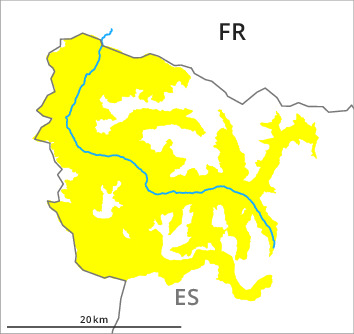
Danger level

2200m
Avalanche Problem

Persistent weak layer

2200m


Wind-drifted snow

2000m


Wind slabs and weakly bonded old snow represent the main danger.
The older wind slabs can be released by a single winter sport participant in isolated cases in all aspects and at intermediate and high altitudes, especially at their margins. These can be triggered in deep layers and reach medium size. Remotely triggered avalanches are possible in isolated cases. Transitions from a shallow to a deep snowpack where hard layers are lying on a weakly bonded old snowpack are especially dangerous.
As a consequence of a moderate to strong wind from southwesterly directions, further wind slabs will form in the course of the day in particular on north and east facing slopes. These can in many cases be released by a single winter sport participant, but they will be small in most cases. The avalanche prone locations are to be found in particular in steep terrain above the tree line and adjacent to ridgelines and in gullies and bowls.
As a consequence of a moderate to strong wind from southwesterly directions, further wind slabs will form in the course of the day in particular on north and east facing slopes. These can in many cases be released by a single winter sport participant, but they will be small in most cases. The avalanche prone locations are to be found in particular in steep terrain above the tree line and adjacent to ridgelines and in gullies and bowls.
Snowpack
>Intermediate and high altitudes: Over a wide area wind slabs are lying on old snow containing large grains. Released avalanches and stability tests confirm the unfavourable bonding of the snowpack in particular adjacent to ridgelines in all aspects.
Low altitudes: The surface of the snowpack will freeze to form a strong crust and will hardly soften at all.
The current avalanche situation calls for experience in the assessment of avalanche danger and careful route selection.
Low altitudes: The surface of the snowpack will freeze to form a strong crust and will hardly soften at all.
The current avalanche situation calls for experience in the assessment of avalanche danger and careful route selection.
Tendency
As a consequence of the southwesterly wind the wind slabs will increase in size additionally on Thursday.